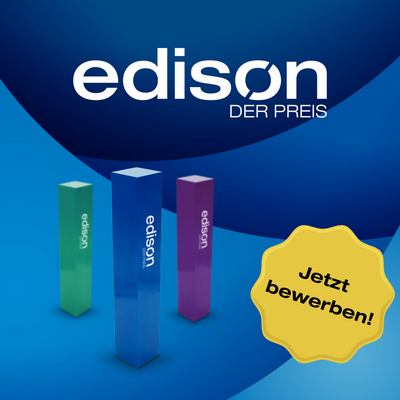Welcome at the Interface Culture program website.
Acting as creative artists and researchers, students learn how to advance the state of the art of current interface technologies and applications. Through interdisciplinary research and team work, they also develop new aspects of interface design including its cultural and social applications. The themes elaborated under the Master's programme in relation to interactive technologies include Interactive Environments, Interactive Art, Ubiquitous Computing, game design, VR and MR environments, Sound Art, Media Art, Web-Art, Software Art, HCI research and interaction design.

The Interface Culture program at the Linz University of Arts Department of Media was founded in 2004 by Christa Sommerer and Laurent Mignonneau. The program teaches students of human-machine interaction to develop innovative interfaces that harness new interface technologies at the confluence of art, research, application and design, and to investigate the cultural and social possibilities of implementing them.
The term "interface" is omnipresent nowadays. Basically, it describes an intersection or linkage between different computer systems that makes use of hardware components and software programs to enable the exchange and transmission of digital information via communications protocols.
However, an interface also describes the hook-up between human and machine, whereby the human qua user undertakes interaction as a means of operating and influencing the software and hardware components of a digital system. An interface thus enables human beings to communicate with digital technologies as well as to generate, receive and exchange data. Examples of interfaces in very widespread use are the mouse-keyboard interface and graphical user interfaces (i.e. desktop metaphors). In recent years, though, we have witnessed rapid developments in the direction of more intuitive and more seamless interface designs; the fields of research that have emerged include ubiquitous computing, intelligent environments, tangible user interfaces, auditory interfaces, VR-based and MR-based interaction, multi-modal interaction (camera-based interaction, voice-driven interaction, gesture-based interaction), robotic interfaces, natural interfaces and artistic and metaphoric interfaces.
Artists in the field of interactive art have been conducting research on human-machine interaction for a number of years now. By means of artistic, intuitive, conceptual, social and critical forms of interaction design, they have shown how digital processes can become essential elements of the artistic process.
Ars Electronica and in particular the Prix Ars Electronica's Interactive Art category launched in 1991 has had a powerful impact on this dialog and played an active role in promoting ongoing development in this field of research.
The Interface Cultures program is based upon this know-how. It is an artistic-scientific course of study to give budding media artists and media theoreticians solid training in creative and innovative interface design. Artistic design in these areas includes interactive art, netart, software art, robotic art, soundart, noiseart, games & storytelling and mobile art, as well as new hybrid fields like genetic art, bioart, spaceart and nanoart.
It is precisely this combination of technical know-how, interdisciplinary research and a creative artistic-scientific approach to a task that makes it possible to develop new, creative interfaces that engender progressive and innovative artistic-creative applications for media art, media design, media research and communication.
EDISON 2025
Beim EDISON 2025 warten auf die besten Ideen Preise im Gesamtwert von über 50.000 Euro
EDISON der Preis ist ein Ideenwettbewerb, der sich an technologie- und innovativ-orientierte Erfinder*innen richtet.
Kategorien:
PIONIER*INNEN
GREENTECH
MEDTECH
HIGHTECH
Ausgezeichnet werden die marktfähigsten, aussichtsreichsten und innovativsten Konzepte. Dieses Jahr gibt es pro Kategorie eine Gewinnerin / einen Gewinnern.
Die Einreichung
- Der EDISON Ideenwettbewerb richtet sich an alle Menschen mit innovativen und technologie-orientierten Ideen für die Produkte und Dienstleistungen unserer Zukunft in Oberösterreich.
- Teilnahmeberechtigt sind konkret natürliche Personen, die das 14. Lebensjahr vollendet haben, sowie juristische Personen und rechtsfähige Personenvereinigungen.
- Es können sich also auch innovative Unternehmen und Gründer:innen in Oberösterreich für den EDISON bewerben. Innovatoren von bereits gegründeten Unternehmen können beim EDISON teilnehmen, wenn sich das Unternehmen noch in der Aufbauphase befindet und noch keine Gewinne lukriert wurden.
- Inhaltliche Voraussetzungen für die Zulassung einer Bewerbung zum EDISON sind:
- die grundsätzliche technische Machbarkeit der Idee muss geklärt und gegeben sein.
- die wirtschaftliche Verwertung der Idee muss plausibel darstellbar und einschätzbar sein.
- Für den Fall, dass mit der unternehmerischen Umsetzung der Idee bereits begonnen wurde, dürfen daraus noch keine Gewinne lukriert worden sein. - Personen, die zum Zeitpunkt der Einreichung im tech2b Inkubationsprogramm oder anderen Ideen- oder Businessplan-Wettbewerben teilnehmen, sind verpflichtet, dies bei der Einreichung bekannt zu geben.
Inhalt der Einreichung
- Pitch der Idee
- Beschreibung des Produkts / der Dienstleistung / Problem-Lösung
- Potentielle Kunden / erwarteter Nutzen
- Potenzielle Märkte / Alleinstellungsmerkmale
- Geschäftsmodell
- Entwicklungsstand der Idee
- Das Team hinter der Idee
